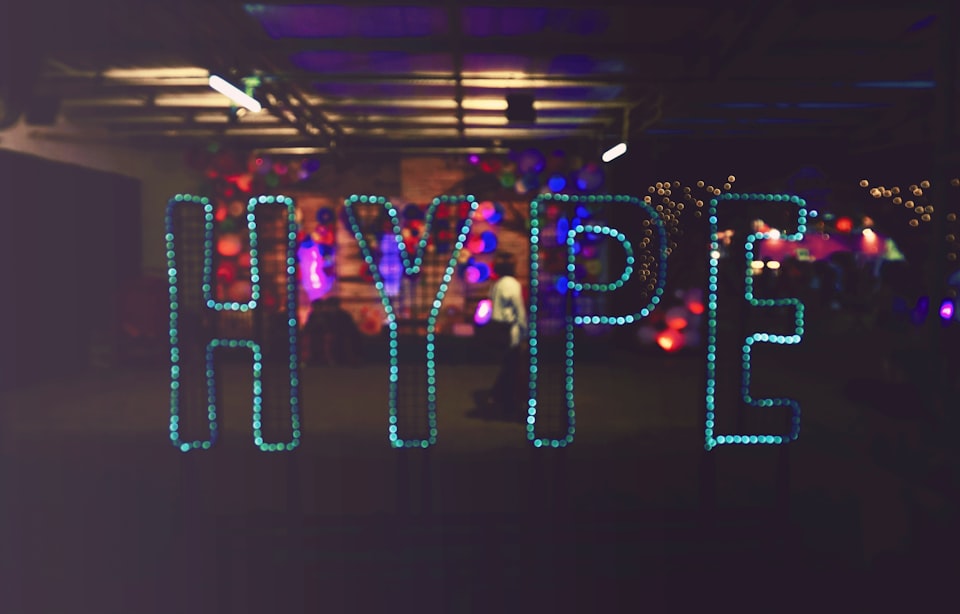In July of 2022, I had the privilege of giving the opening Keynote for THAT Conference. If you're the watching kind, the video is below. If you're not, this post contains a lightly-edited version of my talk and slides as well.
In 1926, Nikola Tesla Predicted the mobile phone.
Kind of.
Here's the quote:
When wireless is perfectly applied the whole earth will be converted into a huge brain, which in fact it is, all things being particles of a real and rhythmic whole… and the instruments through which we shall be able to do this will be amazingly simple compared with our present telephone. A man will be able to carry one in his vest pocket. - Nikola Tesla
It’s fascinating to read this nearly 100 years later. And easy to be impressed at Tesla’s ability to predict the future that we live in. But look close and you’ll see that Tesla was wrong about many of the details in his prediction.

“Wireless” may read to you and I like the radio waves that make up cellular communication, but that’s not what Tesla was talking about. To Tesla, “Wireless” meant wireless electricity, something that he was convinced was totally safe and would become pervasive in time as THE way to transfer electricity from one side of the globe to another.
“the whole earth converted into a huge brain.” This is vague and broad enough to mean anything we want it to. So sure, let’s say Tesla predicted the internet.
“the instruments though which we shall be able to do this will be amazingly simple compared to our present telephone.” Not even close. The Mobile phone, even if you take out all of the non-Phone things that make it smart, is one of the most complex creations in history. Not just the device itself and the ladder-step progress of Moore’s law over 50 years that make it’s insides possible, but the infrastructure that enables global cellular networks, and which took the wired communications of the telephone into the wireless age.
“A man will be able to carry one in his vest pocket.” he meant person. You know, 1926 and all. And here here’s partly right. Carry one in a pocket, yes. But I don’t own a vest, so I suppose Tesla wasn’t one for sartorial prognostication.
So Tesla may have been “right” in the sense that he saw a future for mobile communications, but he was wrong about a lot of the details. Let’s not hold that against him though, he got a big one right. There was a kernel among a lot of lofty language.
And this prediction of Tesla’s can teach us a lot of how to navigate the world of hype.
So let’s talk about hype. First, with a definition. According to Miriam-Webster, hype, when used as a noun means “extravagant or intensive publicity or promotion.” And when used as a verb hype means “promote or publicize intensively, often exaggerating its importance or benefits.”
I’ll take one word from both definitions and give you a two-world tl;dr: Extravagant Exaggeration.

This two word definition is not only a succinct definition of hype, but a key to looking out for and avoiding it. And that’s my goal today: To share my thoughts on how to spot hype, how to find a kernel of truth within a hype-filled area, and if you are passionate about it, how to chase that kernel and ignore everything else.
One. Don't Believe the Hype

Flavor Flav wasn’t just a hype man himself for one of the early great hip-hop acts, he was a modern day prophet, and we should take his words to heart.
But before we can take Flav’s words to heart, we have to learn to identify hype in the first place. And in tech, that can be hard. It’s easy to see hype in music, media, and even politics, but in this room filled with people who have chosen to make technology their lives, or are tech-adjacent, what is hype? What does it look like.
It looks like promise without proof or practicality.
Let’s look at some examples.
AR, VR, The Metaverse, etc.
Starting with AR and VR.

Remember Second Life? In 2009, I was at a Gartner Enterprise Architecture Summit where one of the analyst leads predicted that within 2 years many companies would start moving all of their remote collaboration into virtual spaces in second life.

Thankfully that didn’t happen.
You know what else happened in 2009?

Minecraft was released. Perhaps you’ve heard of this game.
Apparently, Minecraft is the real Metaverse. And while I think I like that idea better than this one…

Still, Minecraft as the Metaverse raises some questions that I don't think we can answer quite yet...

Big Data
Now “Big Data.”
Some of your might remember Google Flu Trends, a “Big Data” project launched by Google in 2008 as a way to track the spread of Influenza across the US. It was a noble task, the CDC would often take weeks to compile this information based on doctor reports, but Google was confident that they could do it faster based on tracking the kinds of things people search online.

When GFT was unveiled in the journal Nature, the paper claimed that GFT had a 90% correlation with CDC data, which was quite an achievement.
However, after five years, the data were analyzed and researchers from Harvard and Northwestern found that GFT overestimated the number of flu cases in the US 100 out of 108 weeks, and that its forecast in February of 2013 was double the cases that actually occurred.

The IoT
Let’s talk about the Internet of Things now. Or the Internet of 💩 as it is sometimes lovingly-called.
Boy oh Boy. This is the space to which I have dedicated the last 7 years of my life. The IoT, nascent since the 80s and officially a going concern since named in the 90s, the IoT sometimes feels like a Hype Dinosaur, which aside from being the name of a prog rock band I started in college, is a testament to how long this space has been reaching for its future promise.
Way back in 2011, Cisco predicted 50 billion IoT devices by 2020. And in 2016, on the heels of Softbank’s acquisition of Arm, CEO Masayoshi Son (yep, the WeWork guy) boldly predicted a “Cambrian explosion” of over 1 trillion devices in the next 20 years.

Compare that with reality. 14 billion, growing to 27 and beyond in the next three years. That’s a LOT, don’t get me wrong. But it’s no 50 billion, much less 20 times that number at 1 trillion.

Artificial Intelligence
Now let’s talk about Hype’s boogeyman: Artificial Intelligence.
Depending on who you listen to, AI is either going to usher in an era of human subservience to machines (like we’re not already) or unlock higher heights of technological progress for humanity.
Or at least, do hard work for us so we can spend more time learning the moves of the latest TikTok viral dance craze. Because spending the equivalent of a part-time job on TikTok isn’t enough right?

In the AI is coming for our jobs department, in 2016, Geoffrey Hinton the “Godfather” of Deep Learning said: “If you work as a radiologist, you’re like the coyote that’s already over the edge of the cliff but hasn’t looked down.” Deep learning is so well-suited to reading images from MRIs and CT scans that people should “stop training radiologists now” and that it’s “just completely obvious within five years deep learning is going to do better.”
Well, it’s over five years later. How are things going for the radiologists?
According to Gary Marcus in "Deep Learning is Hitting a Wall,"
“…not a single radiologist has been replaced. Rather, the consensus view nowadays is that machine learning for radiology is harder than it looks; at least for now, humans and machines complement each other’s strengths.” - Gary Marcus
And as for welcoming our robot overlords…
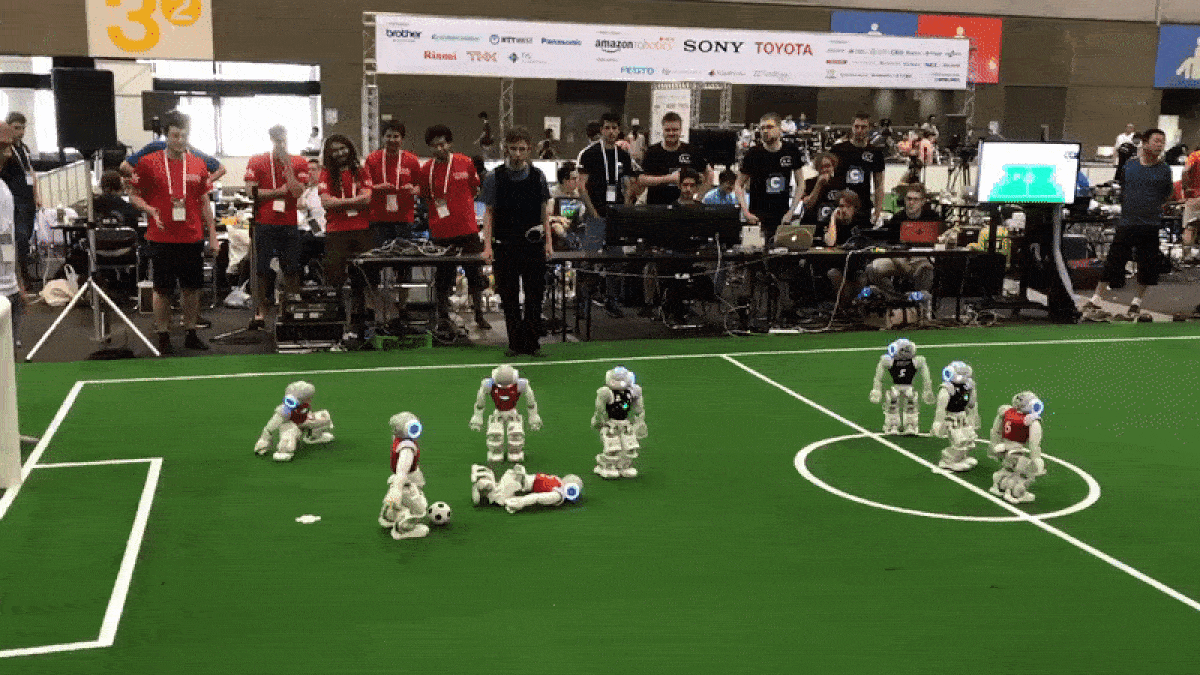
I remember my kids' first year of soccer too.
#Web3
And Finally, #Web3. I can’t not give a talk on hype and not touch the glorious, decentralized techno-libertarian future that is all things Web3. In what sometimes reads like an Ayn Rand fever dream, prognosticators have declared that Crypto, the Blockchain, Distributed Ledgers, #Web3, NFTs, and the like are the future of money, the future of government, the future of politics, the future of art, the future of work, the future of collectibles, and even the future of oddly-specific hobby groups.
Like ConstitutionDAO, a decentralized group that banded together to buy an original replica of the US Constitution for millions of dollars in an auction. And how was this glorified book club going to share such a priceless artifact? Well they would vote and decide later, fielding suggestions that ranged from:
- Let’s put it in a museum only token-holder have access to,
- Let’s tear it up into thousands of little pieces and distribute them among the group.
Thankfully they lost the auction.
And if I had given this talk six months ago, I would have had a harder time rebutting much of this because #Web3 was very much on the hype up-swing. Since then, though…

Web3 is in a tough spot right now, y'all. Thoughts and prayers.
Hype Isn't Just Sunshine Pumping
By the way, hype can be inflationary AND deflationary. For example…
In 1946, Darryl Zanuck said “Television won’t be able to hold on to any market is captures after the first six months. People will soon get tired of staring at a plywood box every night.” Sage words from an executive at Silver screen movie maker 20th Century Fox. I wonder what could have motivated him to say that? And yet, by 1971 in the United Kingdom there were more homes with Televisions than with an indoor toilet.

In 1977, Ken Olsen said “There is no reason anyone would want a computer in their home.” If you don’t recognize the name, Ken Olsen was president of mainframe-maker DEC at the time. A bit biased, he was, because he’d rather your company dedicate an entire floor to these.

Instead, by 2010, 80% of US households owned a PC.

Finally, you know him. You love him. He loves developers, developers, developers. In 2007, Steve Ballmer said “There’s no chance that the iPhone is going to get any significant market share.”
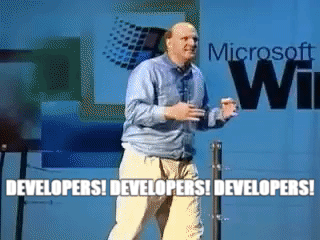
And I don't need to share a market share graphic to make my counter-point here, so let's instead take a look at Apple's market cap.

But this is all anecdotal, and I will admit that it’s easy to throw sand at prognosticators for being wrong. But these are public people who said public things and lots of people took what they said as fact.
And much of what I mean when I say “Don’t believe the hype” is don’t believe the prognosticators, especially those who have something to gain by steering people towards, or away from a given technology.
Watch those people, yes. See what they say, and ask yourself “why?” What do they have to gain if I take that they say at face value?
The Hype Cycle - A Mental Model
But this goes deeper than watching the opinions of prognosticators. Every exercise in critical thinking revolves around the employment of one or more mental models. And what we really need here is a good mental model for thinking about hype.
As it turns out, there are some pretty good models we can leverage to reason about hype. And while I am never one to sunshine pump the analyst community, I do think that the Gartner Hype Cycle is a good and useful tool. Here it is.

At its core, the Gartner Hype cycle is a mental model for thinking about emerging technologies, for understanding the current state of a technology, and for assessing where it might go in the future. Annually, Gartner publishes these hype cycles for industries in an effort to help their customers reason about how to respond or plan for the future.
Gartner has their own terminology to describe each part of this cycle, but I’ll provide my own interpretation here:

Technology Trigger
This is the moment where a technology enters our collective consciousness, maybe it’s been around for a while in the background, but something or someone causes it to explode. More and more news outlets start talking about it, Analysts start talking about it, companies ask about it, and founders start building pitch decks around it. FOMO sets in.

Peak of Inflated Expectations
Interest and excitement grows and grows and grows. Capital gets cheaper and cheaper. Startup Unicorns appear. Pundits claim that anyone not paying attention, or more importantly “not financially invested” in this space are missing out. Even the most fringe or technical of spaces enter pop culture at this point. It can be hard to know that you’ve reached the peak until after the fact, sometimes, but here’s one sure sign: If the technology shows up on whatever network tv cop procedural or crime drama that your parents watch, look out.

Trough of Disillusionment
Because, invariably, the bubble is going to pop. It might be a dramatic pop of a market correction. Hello Bitcoin. It might be that startups can’t find product-market fit and start to fold. It might be a swath of stories about how the hyped technology is snake oil or is being coopted by bad actors or is accelerating the destruction of the planet. Hello again bitcoin. What ever it might be, things start to get rough at this point. Companies fail, investors disappear, people lose money, and haters start to come out of the woodwork. Hello me. At this point, a LOT of people wash their hands of the space and walk away.

Slope of Enlightenment
But not everyone. Some remain. The ones that do, stick around because they believe in something about the future promise of the technology. Not for the money, or in an effort to get rich quick, but because they see some kernel of truth buried in the hype, and they believe they have some way to turn that kernel into something more. To make the essence that technology, it’s core good and promise, a reality. Slowly, after the press and the haters lose interest, opportunity starts to grow again.

Plateau of Productivity
And over time, the technology starts to achieve its promise. Unburdened by hype, companies thrive, customers benefit, and real problems are solved. Money is made, sure, but its money that comes on the back of hard work and persistence, not the result of winning a lottery.
Technologies follow this hype cycle at their own pace, some quick, some slow, and some never make it beyond the trough of disillusionment. It’s important to also know that the placement of any given technology on a cycle like this is anybody’s guess, least of all Gartner. This is a mental model, not a stand in for the truth.

Gartner’s model isn’t a wholesale invention of their own making, and jives with other academic models that have documented technological innovation over the last few centuries. One of the most prominent is a model from Carlota Perez, a British-Venenzuelan scholar. In her book “Technological Revolutions and Financial Capital,” Dr. Perez explores the connection between the movement of financial markets, particularly bubbles, and technological development. She analyzes these correlations across five major technological revolutions that have happened in history: the industrial revolution, The age of steam and railways, The age of steel, electricity, and heavy engineering, the age of oil, automobiles and mass production, and the age of information and telecommunications.

What I like about Perez’s model is that she couples the advancement of technology with what I consider one of the surest signs that you’re in the hype zone: the bubble.
And one of the reasons why I love the Gartner Hype Cycle is because it contains one subtle, but important axiom along its y-axis. And that is that when a technology ascends the slope of enlightenment and reaches the plateau of productivity, chatter about the technology is nowhere near what it was at the peak. In other words, the delta between the peak and the plateau is Hype.

And the peak is dangerous. The air is thin and the lack of oxygen will likely impair your thinking. The peak, or thereabouts is the birthplace of a bevy of bad business ideas that suck up cheap capital like that time I hit the oxygen bar after hiking to the top of Pikes Peak in Colorado. At the peak, ideas that pray upon our greed and human desire to make the most money with the least effort possible seem like a sure thing. Not because of logic, but because we all want to be like Elon. Kind of. Well, not really. Maybe just the money. Definitely not the, well, everything else…

Nearly every technology and innovation of the last several decades has spent time on this cycle, ascending to the peak as we thought that this was the next big thing. And the hype cycle is a good mental model, but we still need a rubric or guidelines to follow when assessing the new technologies and opportunities that assault us every day.
Principles for Navigating Hype
So here are some of my personal principles for navigating hype.
Be wary of advice from those who have the most to gain, or lose
One of the realities of our current connected world that is at the same time fortunate and unfortunate is that it’s easier than ever for people to share their opinions about everything, and for you to hear about it. It’s also true now more than ever that we associate the size of a person’s platform with their ability to speak authoritatively on almost any subject, regardless of their expertise in that subject.
And I am not here to tell you who you should and shouldn’t listen to. I am, after all, just another guy with a platform, an opinion, and the ability to use Gifs and Memes to speak authoritatively about any subject. But I will say that I don’t think you can go wrong looking at the motives of the people who prognosticate about these technologies.
Whether a firm like Gartner or some yahoo with millions of Twitter followers and a Diamond Hands emoji in his bio, ask yourself what does this person or group have to gain if we listen to them, or lose if we don’t. Then, run their opinion through that filter before you decide how much weight to give them.
Remember my examples above? Darryl Zanuck and 20th Century Fox had everything to gain by predicting the demise of the TV. Ken Olsen knew that the Personal Computer would be terrible for his business. And Steve Ballmer, who had the unfortunate job of straddling the gulf between the Windows and Office centric Microsoft of the 80s, 90s and 2000s and the Cloud-centric Microsoft of today, knew very well that the iPhone, if successful, would accelerate the decline of the PC era.
Did these individuals and others like them believe in what they predicted? Of course, because their companies depended on them being right.
If it seems too good to be true, it probably is
A lot of stories that surround hype-filled technologies focus on how people got rich overnight, and startups achieved 3 funding rounds and Unicorn status in 6 months and you can too if you just ask your employer to start paying you in bitcoin.
And while we love a good story about some every person who hit it big, there are lots and lots of people in every tech bubble who hit bottom. And here I will tell you all what my financial advisor told me in 2020 when I asked for her advice on investing in Crypto and Cannabis stocks: Volatility is never a sound long-term investment strategy.
Value created quickly can be destroyed even faster. And you don’t have to look too far to see examples in every single tech space of companies and ideas that flew too close to the sun, too fast, only to crash and burn.
Bird is a good example of this. Founded in September 2017, it had its Series A round of funding in February 2018, raising $15 million, followed by a Series B round one month later in March for $100 million, and a venture round in May for $150 million, making them the fastest company to ever reach the $1 billion "unicorn" valuation. In June 2018, Bird raised an additional $300 million, valuing the company at $2 billion.

Insane. This company raised over $500 million dollars because a bunch of investors saw Bird as the Uber of micro-mobility and were falling over themselves to throw money at the company (only ONE of a handful in the space by the way) because they claimed that they had superior unit economics to their competitors.
Spoiler alert: they didn’t. And in November of 2021, Bird went public via a SPAC deal (also known as an IPO for those that don’t want to have to answer questions about their financials).
And how does it feel to be a shareholder of Bird today? Not great...

YOLO, No FOMO
This one is slightly related to the last, but worth mentioning because in tech FOMO is so real. It’s the reason we take jobs, switch jobs, learn new programming languages and frameworks, and even attend meetups and conferences. In an evolutionary sense, FOMO is responsible for the perpetuation of humanity.
But it’s also the reason why bubbles form. After all, no one wants to be the Fifth Beatle, the third founder of Apple, or any of the people that Zuckerberg railroaded out of Facebook early on.
But acting on FOMO in tech can burn you, so pause, slow down, and think through principles one and two.
Be careful how you apply tech history to the present
This is a subtle, but important one. When we talk about tech, and new trends in tech, we love to use tech history to justify our enthusiasm and fuel FOMO. We’re building the next iPod, we like to say. This is gonna launch like the next iPhone, we point out. And we hold up these technologies as instant hits and point to the excitement around a given technology as proof that what we’re interested in is surely next.
But as it turns out, the stories we like to tell about history, aren’t actual history.
The iPod was a critical success and commercial failure, mainly because Steve Job’s original goal with the iPod was to use it as a way to sell more Macintosh computers. So the first version of the device didn’t even work with a PC. Nor did the second. Finally, Jobs relented and by V3, the device was a hit.

Same with the iPhone. According to Tony Faddell “The first version was really only for early adopters--it didn’t have 3G, didn’t have the app store, and our pricing model was all wrong.” By V3, all of the pieces were in place.

There are very few overnight successes in life, and rocket ship technologies that don’t experience some form of hype cycle disillusionment.
If we’re really looking for the next big thing, maybe we should spend more time looking at technologies in the trough than the ones dominating the headlines?
Run your own tests
Finally, make up your own mind. Run your own tests. If you’ve gone through all of the other principles on this list and you’ve decided this thing might be real and you might want to get involved, try it out. Find some guides or a course to take, download an SDK or get a kit to play with. Start small, take your time, get your hands dirty before you jump in with both feet, whether professionally or financially.
Five simple principles, but not a comprehensive list. You might disagree with some of these, you might have your own. But no matter what logic or rules you apply, here’s the most important thing:

Slow down, breathe deep, ask why, and trust yourself
And I bet you’ll find that your hype radar steers you in the right direction.
Two. Don't Stop Believing in the Promise
So that’s my crash course on navigating hype. So where does that leave us? Do I think we all need to pack it up and leave AI/ML, the IoT, the Metaverse, and #Web3? Far from it!
Remember what I said about the Trough of Disillusionment earlier. The ride from the peak to the trough is a massive culling: of interest, businesses and individuals. Many people walk away, but not everyone does. Some stick around.
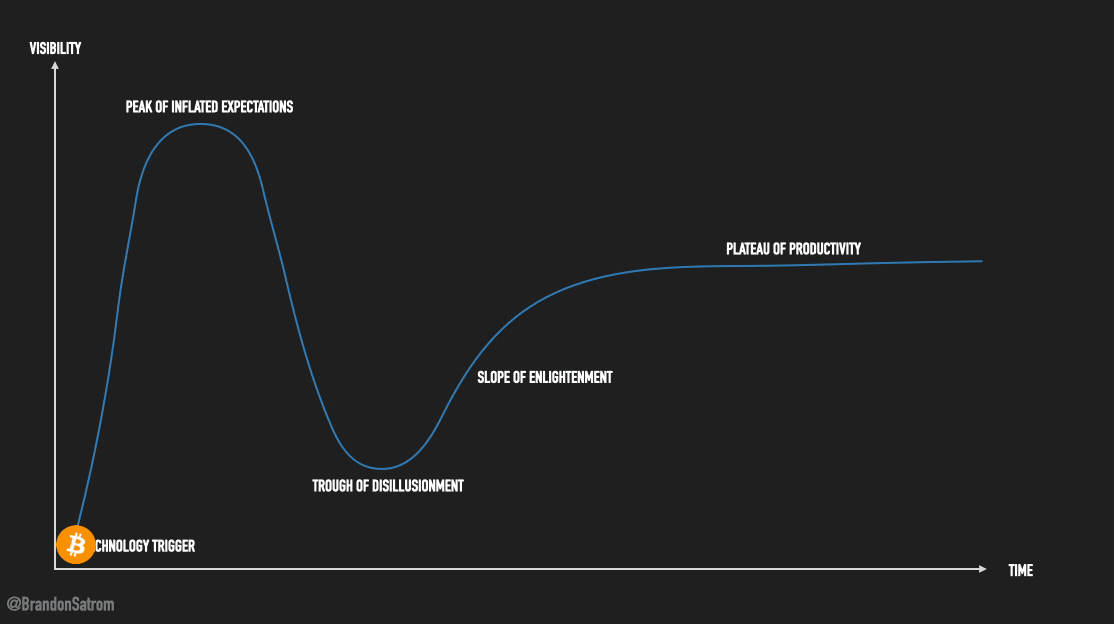
Why? We are obviously not in it for fortune and glory, and yet still, we persist.
I think the people who stick around in the trough of disillusionment are those who have found two things:
- The promise behind the hype
- A kernel of change that can bring that promise to life
The Promise of IoT
For example, and this is very much in my wheelhouse, I believe the promise of the IoT is in ways we use connectivity to do things that are hard, if not impossible, without it.
The promise of IoT was evident in the wake of the Fukushima Nuclear disaster on 2011. In April of that year a 9.0 magnitude earthquake struck off the coast of Japan. The earthquake resulted in a tsunami. Waves that reached heights of over 40 meters, traveled at 700 km/h, and moved 10 kilometers inland. 20,000 people were killed, hundreds of thousands were displaced, and three reactors at the Fukushima Daiichi Nuclear Power Plant complex melted down. It was the largest nuclear disaster since Chernobyl.

And out of this disaster, a group of scientists and technologists came together to form Safecast, one of the largest citizen science projects in the world. Over the last 11 plus years, the group has built mobile devices that use wireless, IoT connectivity to monitor radiation and air quality in Fukushima and in thousands of other locations around the world.

An impossible problem 15 to 20 years ago made possible with the IoT.
The Promise of AI/ML
In the world of AI and ML, I believe the promise lies in how advances in ML on resource constrained devices frees us from a dependency on Hyperscaler Cloud infrastructure, meaning we can build resilient, secure, privacy-preserving vision, audio, and machine monitoring models that work where they are needed, and not on the open internet and across some pipe.

The promise also lies in the ability of ML to find patterns among data that we cannot. To prevent problems before they happen, detect cancer early, or a signal of danger among the noise.
The Promise of AR, VR
In the world of AR and VR, I have to admit that I am still a skeptic and I wonder sometimes if this is a decade’s long solution in search of a problem. BUT it isn’t about me. This is not a space I am passionate about. But I know that some of you in this room are. For immersive gaming, sure, but also because AR and VR can provide experiences that are inaccessible for many; And because these technologies can create community and connection across long distances and cultures.
Because AR/VR can provide immersive experiences for anyone, it provides an opportunity for those who no longer or never did have access to certain experiences to have them. The technology has already proven quite useful in treating dementia, and is even being used to increase empathy and is being used for bias training and in diversity, equity, and inclusion initiatives.
The Promise of #Web3
Finally, lost in all the crypto hype and crash is the real utility of Web3.0, at least in my limited understanding of it. As with AR/VR, Web3 is not my passion. But, as I understand it, at its core there is a promise to put the web back in our hands.

To reshape the web so that artists and creators can monetize the fruits of their labor and own what they create; so that humanity can take back the web from those who seek to monetize our attention for their own gain; from those build platforms where our interests are up for auction; from those who wish to keep us glued to screens even as those screens make us sicker, unhappier, and less tolerant; or for those who would censor us or concentrate power in the hands of a few.
That sounds like a Web3 I could get behind.

To be honest, I could be wrong about these things, and you might disagree with me. I am certainly no expect in AR, VR and Web3, so you might think my assessment of the promise in those areas is wrong.
But that’s great! So if you are at this point, and you think I am wrong about the real promise of Web3, or even if you agree with me, you’re ready for the final step on the journey beyond hype.
Three. Do Chase the Kernel
I mentioned that people who stick around in the trough are motivated by two things: the promise, and a kernel of change to fulfill the promise. And once someone or some company or group has identified that kernel, that becomes their focus.
Sometimes that kernel is removing a roadblock that’s slowing down adoption. Sometimes it’s a refocusing of the technology to solve problems once niche at a time. Sometime’s it’s just a matter of plodding away under the rest of the technology supply chain catches up and allows you to finally deliver.

Whatever it is, this is where the real work happens. The roll up your sleeves, blood sweat and tears work.
And here, in this last step, the work is very personal, and it may be different for all of us. To that end, I can’t tell you what that kernel is for AI/ML, AR/VR, or even #Web3 because I don’t work in those spaces.
The Kernel of the IoT
But I can tell you what the kernel is for me and the people I work with in the IoT space. And If you’re passionate about the IoT, maybe you’ll join us for the ride up to the slope of enlightenment. And if not, maybe my example will help you figure out the kernel that matters in your space, and what real work needs to be done.
My Story
I have been a software engineer for much of my 23 year career. I worked on the web starting in the ASP Classic days, navigated through the dot com boom and bust, picked up .NET and C# in the v1 days, and held on for dear life through WindowsDNA, WCF, WF, BizTalk, SOAP, XHR, jQuery, Ruby on Rails, Angular, React, Svelte, the Cross-Platform Mobile app dev craze, the Mobile App Dev platform craze, and even this one time where I thought it might be cool for web developers to write native apps for Windows 8 in JavaScript.

In three languages, no less.
Turns out, it took me 16 years to find my calling. But I did, in 2015, with a Arduino Uno kit from SparkFun electronics.

I was immediately hooked, and I came into the space at what we now know was the apex of the “maker movement.” Other geeks like me: including a ton of other non-hardware folks were flocking to the space, enamored by the blinky lights, spinny things, and the mishmash of art, science, math and engineering that pervaded the maker space.

Alas, it was not meant to last. Corporate Sponsors like Microsoft and Google stopped attending Maker Faire, the event and magazine went bankrupt, and IoT-centric Kickstarter campaigns and companies started to miss delivery dates, or disappear completely.

Meanwhile, numbers of deployed IoT devices started to fall far short of expectations, security breaches and botnet after botnet replicated like bad news across the space.
And the IoT continued to slide down the trough.
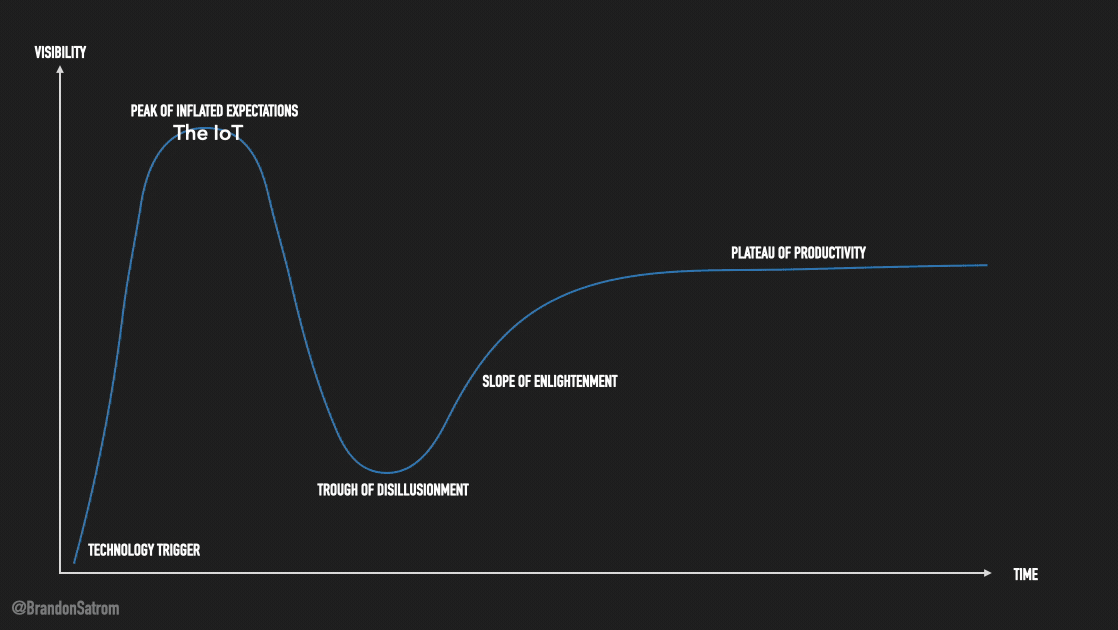
But by that time, I had already left the web world behind and was at an IoT startup. The demise of the maker movement was sad, but I still knew plenty of makers who kept going. And businesses who took a chance and had some success.
Stories started to emerge of good work being done in the space: from environmental monitoring in the ocean, to health care applications in developing countries, there was enough to see the promise.
But for me, the kernel was still missing.

IoT Projects still take between 2-5 years to complete, and among those fortunately enough NOT to be canceled, 76% take up to twice as long as estimated.
There was hard work to be done, but I believed that there was a kernel to be found.
Then, a little over two years ago, I found it, when I met this guy.

This is Ray Ozzie. It might be a name you recognize. Ray has done a lot in his career, but the folks reading this are likely to recognize him as either the creator of Lotus Notes and/or the creator of Groove and eventual CTO and Chief Software Architect at Microsoft.
What you might not know is that, since 2017, Ray has been working in the IoT space, as the CEO of a company called Blues Wireless.

I first met Ray in April of 2020 on a Zoom Call (you know, covid), and I knew within minutes that this was someone who could see the promise AND had found the kernel. The thing that could lift the IoT out of the trough of disillusionment and into the slope of enlightenment.
And I knew I had to join.
What is that kernel, you might ask?

This is it. It’s what we do at Blues Wireless, and it’s what we think is absolutely necessary to move the space forward. Because do you wanna know why the maker movement cratered, and why so many early projects got canceled?
Because the IoT is hard, slow, and complex.
And when I did my research on Ray after meeting him, I discovered a quote of his that I’d heard before and since forgotten about.

Complexity Kills. This is something Ray said long before starting blues but boy does it apply in the IoT space. As it turns out, Ray was part of that group that formed Safecast back in 2011 and helped them build their devices over the years using a number of different MCUs and host communication protocols. And along the way, he lived the complexity inherent in the IoT space.
Let me give you an example. Imagine you wanted to build an IoT solution from scratch. You have all the sensors you need, and even an ESP32 to be the brains of the project. But it’s an outdoor solution, or a mobile one, so Wi-Fi isn’t gonna work. You need cellular. Fine, so you go and source a cellular modem from Quectel, or buy one with a combined MCU from someone like Nordic Semiconductor.

No big deal, right? But what if I told you that the state of the art for communicating with that modem and thus getting your project on the internet was a technology that has its roots in dial up modems.

The Hayes Command Set, or AT commands as they are often called, a text-based command-language invented in 1981, is still the way that most IoT and embedded engineers talk to the modems they include in their projects.

And this is just one example of the complexity we IoT engineers live with day in, and day out. Aside from the cost and complexity inherent in hardware, we have to deal with antiquated programming languages, manual key management and rotation, and providers that price their data plans like mini cell phone plans and are looking to lock us in to multi-year platform commitments before we deploy the first device.

I like to refer to these things as the Strings of Wireless IoT. These are things that cut off choice, slow us down, and dampen the fire of our ideas. They are the complexities in the space that many have just come to accept and which many platform providers tend to hand wave as “just the way things are”. So they sell you a SIM with a monthly fee, because that’s what their Network Operators do to them. They steer you towards a limited set of embedded languages because “real” embedded engineers only use C and everything else is a toy, and limit their reach in the process. They insist you sign a multi-year platform subscription deal because “that’s just the way enterprise software is sold.”
It’s no wonder it takes anywhere from two to five years for an IoT project to reach the finish line, and that 75% of projects take twice as long.
At blues, we’ve lived the pain of complex IoT, because we are builders. We’ve experienced all of these stings and more. and as as we’ve worked in the trough of disillusionment, we’ve worked at blues to simplify, and speed up.
How do we simplify?
By not accepting the status quo as the way things had to be.

We don’t sell you a sim with a monthly fee. Instead, every cellular device we sell comes with 500 MB of data, 10 years of service, and 5,000 routed events through our platform included in the cost of the device, which we call the Notecard by the way.
We don’t force you figure out IoT security all by yourself, manage keys, or deal with cloud-based provisioning. The Notecard has its keys baked in in a secure element at the point of manufacture, and communicates with our cloud off the internet and over secure VPN tunnels.
And, with all apologies to Dennis Hayes we don’t make you learn AT commands to communicate with our module. Instead, all communication to and from the Notecard happens through JSON: from adding you sensor data, to configuring location tracking, to synchronizing with the cloud.

And how do we speed the IoT up?
By building hardware, SDKs and examples that meet developers where they are, and let them use their MCUs, and Single Board computers, and the programming languages they are most productive in.
And by not trying to create another end-all-be-all IoT platform; Instead, making it simple for our customers to tier their sensors and their applications into their cloud apps of choice.

Let me be clear. This is not a sales pitch. If you’re interested in the IoT space, or looking to solve problems in this way, I would love for you to check us out. But my point in all of this is to share our passion, and to show what it looks like when you push through the hype. In the IoT, the hype is behind us, and our best days are just beginning, but at Blues, we are having a hell of a lot of fun accelerating our customers with a relentless focus on simplicity.
I said earlier that I couldn’t speak to the kernel in other spaces. And I can’t, but I suspect that you might find some inspiration about how we think about the IoT space. Because it just might be that complexity is the thing that haunts many emerging technologies, and drags them to the bottom.
And who are the heroes that haul them out of the trough and into promise?

Those who see the problems, who don’t accept them as “just the way things are,” and who do the tireless work to solve them.
So what’s dragging down Machine Learning, Virtual Reality, #Web3, or whatever you are passionate about?
There’s your kernel.

Tesla, 100 years later

Nearly 100 years later, it’s easy to be impressed with the predictions that Tesla made, or to look back upon tech history and imagine a smooth path from Maxwell’s Four Laws and the vacuum tube to the computer, to the integrated circuit to the PC, internet, mobile phone, and beyond. But every one of these and countless other technologies took a ride on the hype cycle before they took their place in the pantheon of mature technologies.
And the people who ushered those technologies through the cycle weren’t the snake oil salesmen, or the street corner prognosticator, but the people who never stoped believing in the promise of those technologies, who cut through the hype to find the kernel, and do the work that needed to be done.
And I promise you, the water’s fine down here in the trough of disillusionment, so I hope you’ll consider joining me: whether in the IoT, AI, ML, VR, Web3, or whatever soon to be former big thing comes next.
There’s lots of work to be done, and we need passionate people to do it.


